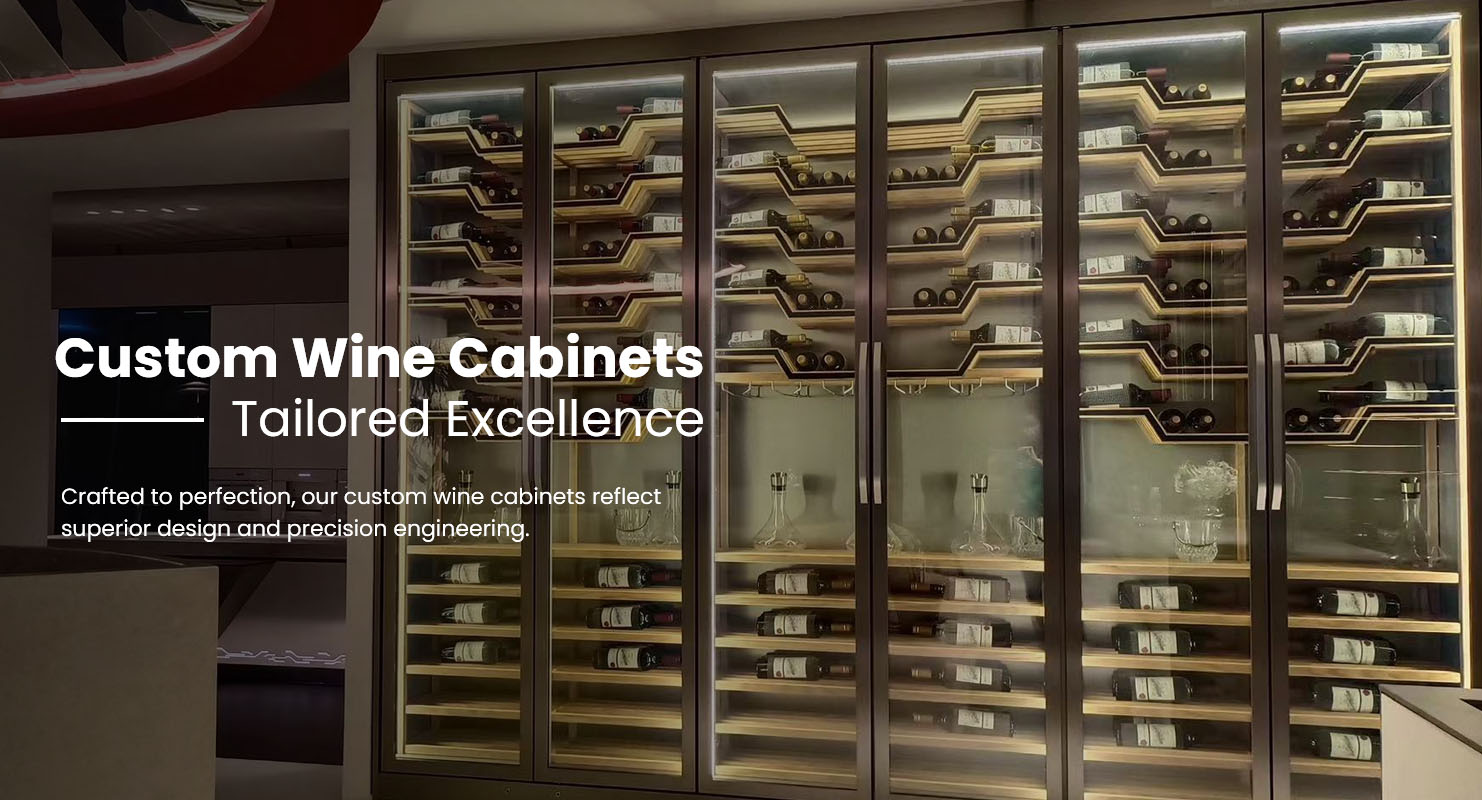Why Is My Wine Cooler Leaking Water
A Wine Cooler is designed to maintain perfect humidity and temperature for wine preservation.
So if you notice water pooling inside or beneath your wine cooler, it can be concerning.
Fortunately, most causes of leakage are minor and easy to fix once you understand the source.
This guide explains why a wine cooler may leak water, how to identify the cause, and how to prevent it from happening again — ensuring your WINTON Wine Cooler continues operating at peak performance.
1. Normal Condensation vs. Actual Leakage
Before assuming there’s a problem, determine whether the moisture you see is normal condensation or a real leak.
Normal condensation: A light film of moisture or small droplets on the inner back wall, especially during hot or humid weather.
Leakage: Visible puddles of water inside the cabinet, under the shelves, or on the floor beneath the unit.
Condensation is part of the cooling process. However, if the cooler is producing excess water, it usually means something in the system — drainage, humidity, or placement — needs attention.
2. Blocked or Clogged Drain Hole
Most wine coolers include a small drain hole or channel at the back of the interior.
This allows condensation to collect and drip into an evaporator tray, where it naturally evaporates.
If this drain becomes blocked by dust, debris, or mineral residue, water has nowhere to go — it pools at the bottom of the cooler and may overflow.
How to fix it:
Unplug the unit.
Locate the small drain hole near the lower back panel.
Use a cotton swab or soft pipe cleaner to clear it.
Wipe the interior dry before restarting.
WINTON wine coolers are built with accessible drainage channels for easy maintenance, ensuring long-term reliability with minimal effort.
3. High Humidity or Warm Environment
If your wine cooler operates in a humid or hot room, excess moisture may build up faster than the unit can evaporate it.
When warm, damp air enters each time the door opens, condensation forms on the cooling plate and walls.
How to fix it:
Move the cooler away from direct sunlight, ovens, or heating vents.
Maintain ambient temperature between 10 °C and 30 °C (50 °F – 86 °F).
Keep the door closed as much as possible.
WINTON’s advanced compressor models use balanced humidity control systems, but consistent room conditions help prevent unnecessary water buildup.
4. Door Seal Not Closing Properly
A loose or damaged door gasket allows humid air to enter.
As this warm air meets the cold interior, moisture condenses into water droplets that can collect along the base.
How to check:
Close the door on a thin sheet of paper. If you can pull it out easily, the seal may not be tight.
Look for cracks or deformation in the gasket.
Solution:
Clean the seal with mild soap and warm water, then dry it completely.
If it remains loose, replace the gasket.
All WINTON wine coolers feature magnetic, tight-fit door seals that keep the interior climate stable and prevent humidity intrusion.
5. Overfilled Shelves or Blocked Airflow
Proper air circulation is essential for cooling and moisture control.
When bottles are stacked too tightly, cold air cannot circulate freely, and frost or condensation accumulates near the cooling coil.
As the frost melts, it can appear as leaking water.
How to fix it:
Avoid overloading shelves.
Leave at least 2 – 3 cm (about 1 inch) between bottles and the back panel.
Check that air vents at the rear and sides are unobstructed.
WINTON coolers use multi-fan air distribution, but even airflow still depends on good bottle spacing.
6. Drain Pan Overflow or Misalignment
Condensate collects in a drip tray located above the compressor at the bottom of the unit.
If the tray is misaligned or full, water may spill out instead of evaporating.
Solution:
Unplug the cooler and carefully pull it forward.
Remove and inspect the drip tray.
Empty any standing water and clean the tray.
Reinsert it securely before turning the unit back on.
Regular inspection prevents overflow and ensures that normal condensation evaporates properly.
7. Frequent Door Opening
Every time you open the door, warm, moist air enters and condenses on the cooler’s cold surfaces.
This effect multiplies in humid environments or during frequent access.
How to fix it:
Limit unnecessary door openings.
Avoid leaving the door open for long while selecting a bottle.
Check the digital display to confirm temperature stabilizes after each cycle.
WINTON’s insulated glass doors and precision thermostats help recover the correct temperature quickly after opening, reducing condensation risk.
8. Faulty Thermostat or Temperature Setting
Setting the temperature too low can cause internal frost buildup that melts periodically into water.
If the thermostat malfunctions, the compressor may run continuously, dropping temperatures below optimal range.
Solution:
Set the cooler between 7 °C and 18 °C (45 °F – 65 °F).
If freezing or constant cycling occurs, reset the thermostat according to the manual.
If the issue persists, contact WINTON service for sensor calibration or replacement.
All WINTON models include accurate digital thermostats to maintain stability within ± 1 °C.
9. Condensation on the Exterior
In very humid environments, water droplets may form on the outer glass door rather than inside.
This isn’t an internal leak — it’s just condensation.
How to prevent it:
Maintain room humidity below 70 %.
Wipe the exterior glass periodically with a dry microfiber cloth.
Ensure proper ventilation space around the cabinet.
WINTON’s double-layer or triple-layer glass doors include anti-fog insulation that minimizes exterior condensation.
10. Preventive Maintenance Checklist
To prevent future leaks and maintain peak performance:
✅ Keep the drain hole and drip tray clean.
✅ Maintain ambient room temperature within 10–30 °C.
✅ Check door seals monthly for tight closure.
✅ Avoid overloading shelves or blocking vents.
✅ Wipe interior moisture during routine cleaning.
✅ Defrost manually if excessive frost appears.
These small steps will protect both your cooler and your wine collection for years to come.
Conclusion
A leaking wine cooler doesn’t always mean serious trouble — most causes relate to condensation, drainage, or humidity control.
By performing simple maintenance and monitoring the environment, you can eliminate leaks quickly and keep your wine at the perfect temperature.
WINTON Wine Cooler integrates sealed humidity systems, tight magnetic doors, and automatic defrost functions to minimize condensation and prevent water buildup.
With proper setup and care, your unit will continue delivering stable, silent, and elegant wine preservation every day.
Learn more about professional wine storage solutions at www.wintonwinecooler.com — where precision engineering safeguards every bottle perfectly.
Previous: Why Is My Wine Cooler Not Cooling


